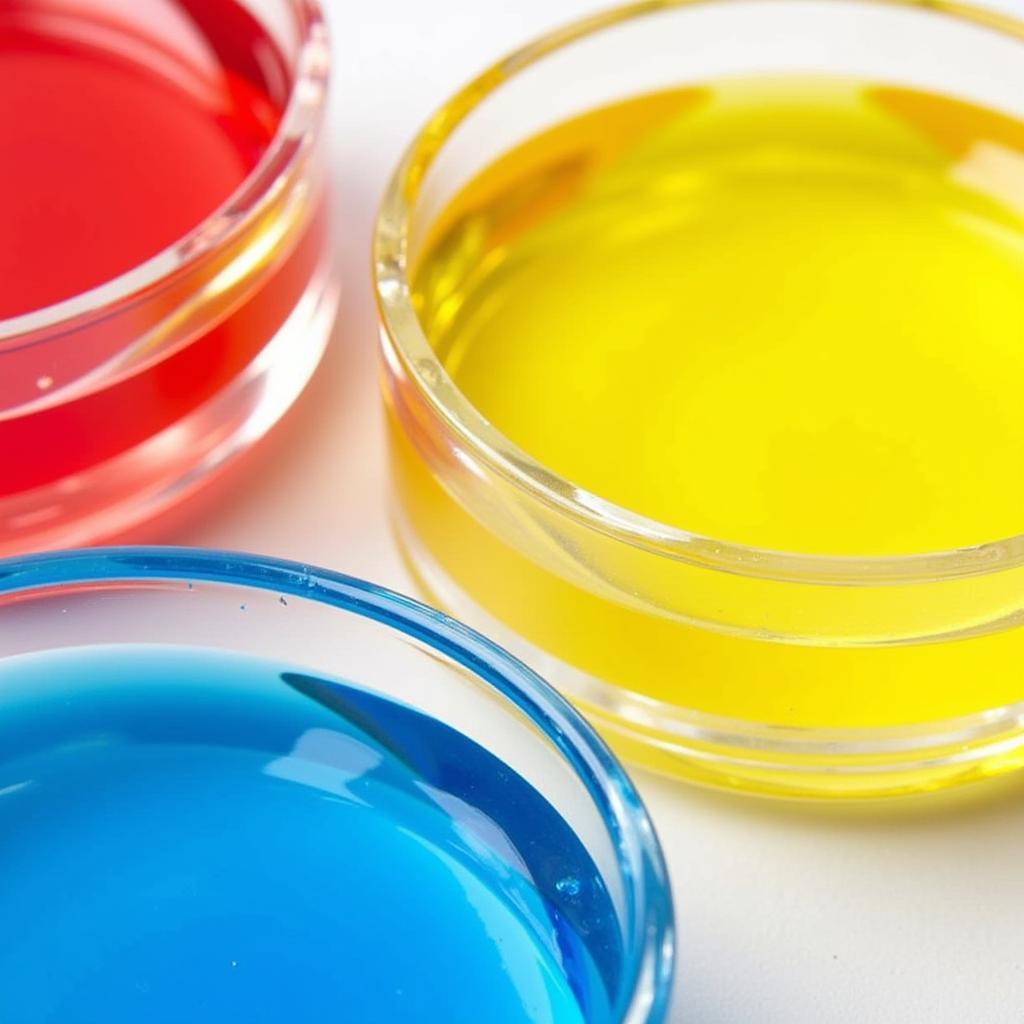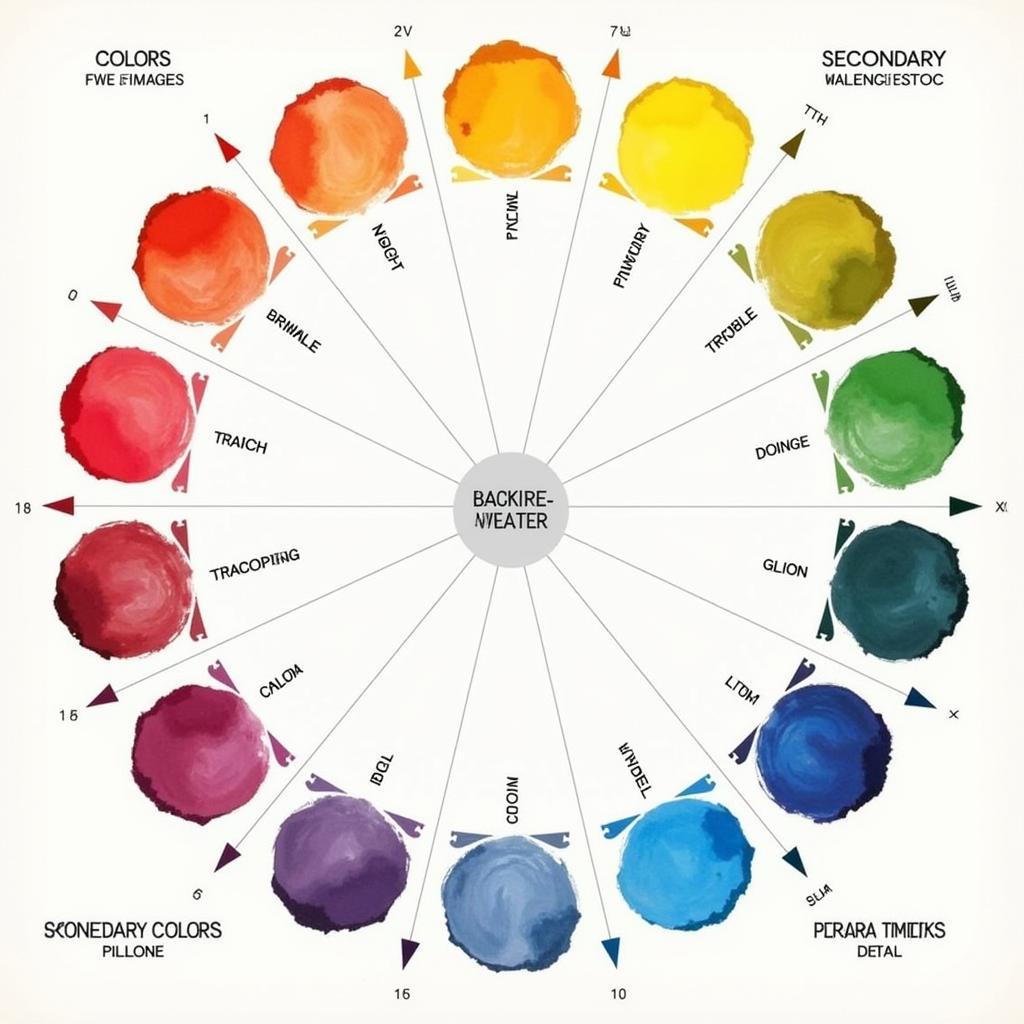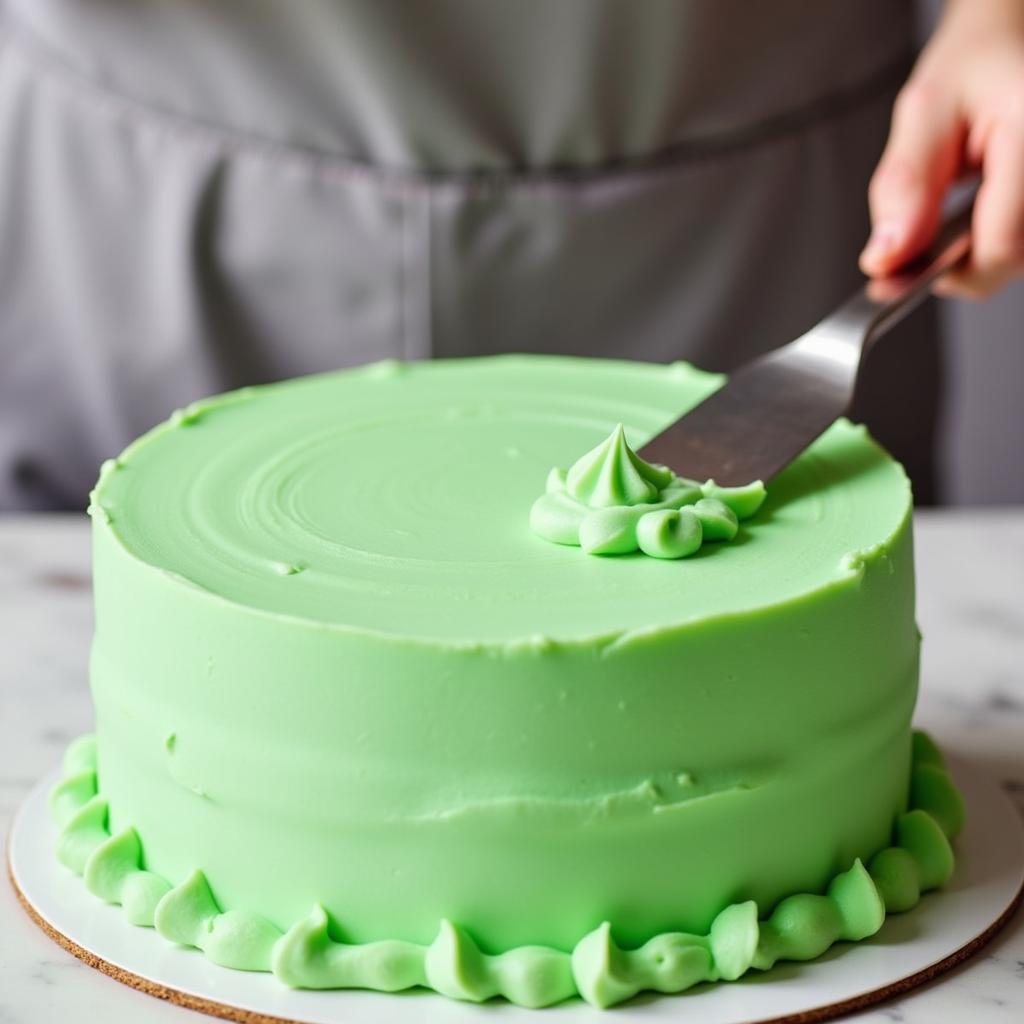Understanding the art of color mixing for food coloring opens a world of possibilities in the kitchen. Whether you’re crafting a show-stopping cake or adding a touch of whimsy to your cookies, knowing how to blend primary colors into a rainbow of hues is a skill worth mastering.
Mastering the Basics: Your Primary Color Palette
Just like in art class, our food coloring journey begins with primary colors. These magical hues – red, blue, and yellow – form the foundation of our color mixing chart. Let’s explore their unique characteristics:
- Red: This vibrant shade evokes passion and excitement. It’s perfect for creating shades of pink, orange, and purple.
- Blue: Cool and calming, blue is excellent for achieving serene shades of green, purple, and even black when mixed with other colors.
- Yellow: Sunny and cheerful, yellow brings joy to our creations. It’s ideal for achieving shades of green, orange, and brown.
 Primary Food Coloring Set
Primary Food Coloring Set
From Primary to Perfection: Creating Secondary Colors
Now that we’re acquainted with our primary hues, let’s delve into the magic of blending them to create secondary colors:
- Green: Combine equal parts blue and yellow food coloring to achieve a refreshing green, perfect for frosting leaves or creating a slime-themed treat.
- Orange: Mix equal parts red and yellow food coloring to create a warm and inviting orange, ideal for pumpkin-spiced goodies or a sunset-inspired cake.
- Purple: Blend equal parts red and blue food coloring to achieve a regal purple, perfect for adding a touch of royalty to your desserts.
Expanding Your Palette: Tertiary Colors and Beyond
By combining primary and secondary colors, we unlock a spectrum of tertiary colors, adding depth and complexity to our culinary creations:
- Red-violet, blue-violet, blue-green, yellow-green, yellow-orange, red-orange: These nuanced shades are achieved by experimenting with different ratios of primary and secondary colors. For example, to achieve a rich red-violet, use a higher ratio of red to blue.
 Food Coloring Mixing Chart
Food Coloring Mixing Chart
Tips and Tricks for Successful Food Coloring
- Start small: Always begin with a small amount of food coloring and gradually add more until you achieve your desired shade.
- Gel food coloring: Gel colors are highly concentrated and offer greater control over the intensity of the hue, making them ideal for achieving vibrant colors.
- White canvas: When working with lighter shades, start with a white base, such as white frosting or batter, to ensure the colors appear vibrant.
Troubleshooting Common Color Mixing Challenges
“My colors always turn out muddy!” Does this sound familiar? Let’s address some common food coloring woes:
- Overmixing: One of the most frequent culprits of muddy colors is overmixing. To avoid this, add color gradually and stop mixing once you’ve reached your desired shade.
- Food coloring type: Liquid food coloring can thin out your frosting or batter. Opt for gel or paste food coloring for more concentrated pigments and better control.
- Lighting: The lighting in your kitchen can impact how colors appear. If possible, work in natural daylight for the most accurate color representation.
 Frosting a Cake with Food Coloring
Frosting a Cake with Food Coloring
Conclusion: From Rainbow Cakes to Elegant Desserts
Mastering a color mixing chart for food coloring empowers you to transform ordinary treats into edible masterpieces. By understanding the interplay of primary, secondary, and tertiary colors, you can unlock a world of vibrant possibilities in your kitchen. So, embrace your inner artist, grab your food coloring, and let your culinary creativity shine!
FAQs: Your Color Mixing Questions Answered
1. Can I mix different brands of food coloring?
Yes, you can generally mix different brands, but the color concentration might vary slightly. It’s always best to start with a small amount and adjust as needed.
2. How do I achieve a true black food coloring?
Achieving a deep black often requires a combination of colors rather than relying solely on black food coloring. Start with a dark chocolate base and add concentrated doses of red, blue, and green until you reach your desired shade.
3. What should I do if I add too much food coloring?
If you’ve added too much color, try to salvage the mixture by adding more of the base ingredient (frosting, batter, etc.) to lighten the shade.
4. Can I use natural food coloring for mixing?
Yes, you can use natural food colorings like beetroot powder, turmeric, and spinach puree for mixing, but keep in mind that the colors might be less vibrant and more earthy compared to artificial food coloring.
5. How do I prevent colors from bleeding into each other?
To prevent colors from bleeding, ensure your frosting or batter is properly chilled before layering or piping. Using a dam of frosting around the edges of each color section can also help prevent bleeding.
Need Help with your food orders?
Contact us at Phone Number: 02437655121, Email: minacones@gmail.com, or visit us at 3PGH+8R9, ĐT70A, thôn Trung, Bắc Từ Liêm, Hà Nội, Việt Nam. Our customer service team is available 24/7 to assist you. Don’t forget to check out our other informative articles on air dried dog foods and best cockapoo puppy food for your furry friends.